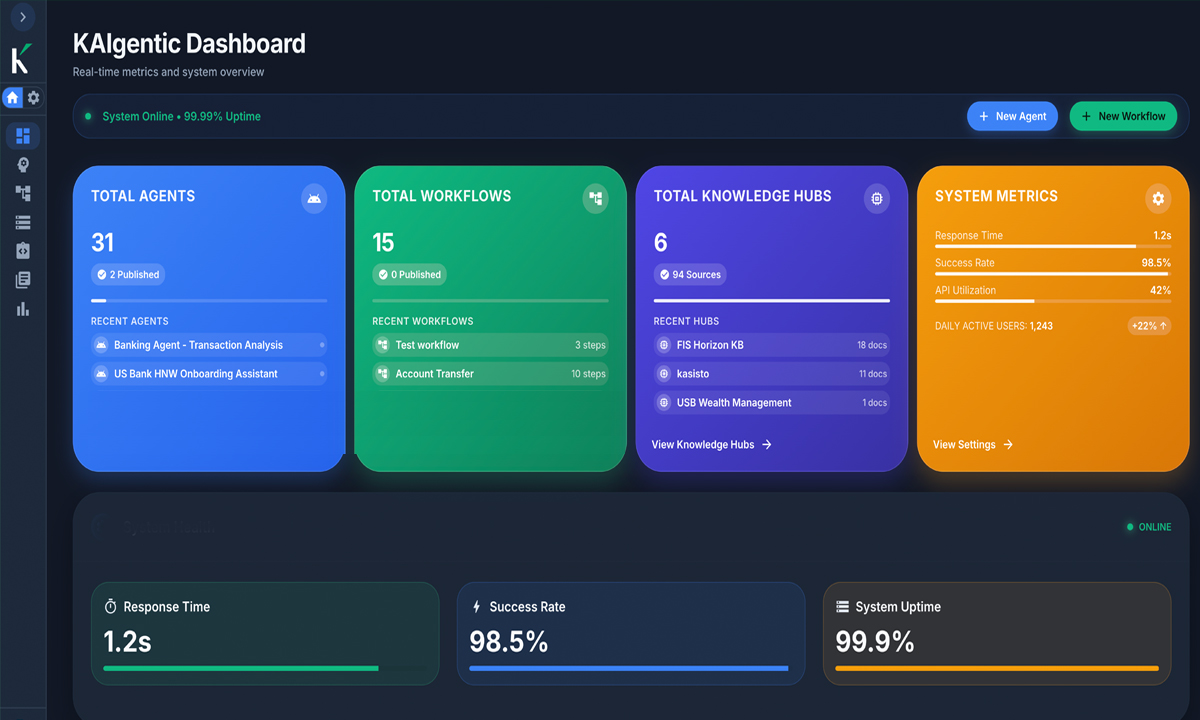As published in Digital Banking Report Humanizing the Digital Banking Experience
At the end of 2017, The Financial Brand asked over 100 global financial services leaders about their predictions for the top 10 retail banking trends for 2018. Remarkably, conversational AI can help address six out of the ten: removing friction from the customer journey, expanding the use of data and advanced analytics, improving multi-channel delivery, building fintech partnerships, exploring advanced technologies and competing with new challengers.
Around 40% of forecasted industry AI spend in 2018 will be on software, including conversational AI that creates personal, contextual and predictive banking experiences. Conversational AI can help banks create more engaging, differentiated customer experiences; change their relationship with customers from money movers to money managers; increase the lifetime value of customers; decrease customer support costs, and build trust and loyalty.
For the first time, banks can personalize their digital engagements with customers in real-time, taking a customer-centric approach versus a products and services approach. It’s not surprising that in just the past year we’ve seen leading banks around the world launch engaging digital experiences with virtual assistants, giving customers new, humanizing connections through which they can manage their money. Done right, these new AI-driven experiences will empower banks to strengthen customer relationships at scale.
What have we learned from these initial deployments? Here are the three key factors I believe we are seeing emerge as critical: personalization, context, and coexistence with humans – all moving toward humanizing digital experiences.
Personalization is Powerful
Digital engagement and mobile banking have already transformed customer expectations, but banks have a differentiation problem: according to Forrester, one-third of customers say all banks are essentially the same. In an effort to pull away from the pack, it’s critical for banks to create personalized experiences that surprise and delight their customers, making them feel like valued individuals, rather than a collection of account numbers.
While a teller’s knowledge may be limited by their individual experience, virtual banking assistants are hungry for data, and an AI-powered assistant can draw on the collective knowledge of thousands of customer interactions to glean insights and make recommendations. For example, it can learn that after asking “What’s my balance,” a customer is very likely to ask a spending related question such as, “How much did I spend on restaurants this week?” It can also learn that the reaction to a “How much did I spend?” question is unlikely to be “Awesome” and very likely to be “Can you tell me when I hit $XXX?” By providing personal, insightful, contextual conversations, conversational AI enhances a bank’s ability to build rewarding, long-term relationships with customers. A smart virtual assistant will know how to leverage data to make the conversation personal, and that experience will build lifelong customers that value their banking experiences.
Smarter engagements will drive “sticky behaviors.” When a virtual assistant or bot engages the customer, its goal is to meet the consumer’s goals and improve their financial well-being. Knowing what the customer wants helps them recommend the products and services they actually need. Not only do you increase brand loyalty by helping customers manage their money, track spending and reach saving goals, you also increase the lifetime value of your customers.
Context is Critical to Humanizing the Experience
Most conversational AI systems answer a question, but then leave it up to the customer as to what they should do next. Few go beyond answering basic questions and helping users accomplish one goal at a time. Those tactics are sure to disappoint customers, and they won’t help banks differentiate.
The best conversational AI platforms combine deep domain expertise with the ability to reason and interpret context – they are able to track goals and intents, and then react accordingly. This enables them, for example, to provide personalized recommendations with contextual offers for products and services and assist customers in making decisions about which loans, credit cards, savings and investment accounts are right for them. A branded virtual assistant can give banks a vehicle with which to share those recommendations with customers and increase their share of wallet with the bank.
Acting on insights helps to increase the lifetime value of customers. Conversational AI helps leverage data about your customers’ journeys to make relevant, timely, contextual suggestions. It takes the friction out of the up-sell and cross-sell flows and is far more cost effective than sending general offers. Conversational AI can actually learn from customer behavior and assist them to::
- Apply for a new credit card, debit card or loan
- Purchase additional products like travel insurance
- Activate a new credit card
- Increase a credit limit
- Convert a basic account to a full savings account
- Enroll in a promotion or campaign
More important than product sales is that this type of engaging interaction helps people better manage, identify and plan for their financial futures. The ultimate goal of moving to conversational AI is helping customers achieve financial well-being. Conversational AI provides insights into spending behavior, habits and progress toward goals, giving customers better visibility and more power. Rather than present the data in a static spreadsheet or long-form statement, AI powers human-like conversations to help build brand affinity and trust, fundamentally changing the relationship between bank and customer. The bank is no longer simply a money mover. With conversational AI, they become money managers and trusted financial partners, which helps build trust and loyalty.
Conversational AI Augments Humans
From the customer perspective, the digital assistant is a blank text box or open mic ready to assist. People simply ask for what they need as if talking to a bank teller or branch manager, and the virtual assistant replies in easily-understandable language. A sophisticated virtual assistant will not only reply, but offer a recommended next step or suggestion based on the initial inquiry.
Since the virtual assistant is driven by data, analysis and insights, the banking experiences it can offer go beyond those of a teller or even branch manager. Given the vast scale of information at the assistant’s virtual fingertips, it can provide deeper, more comprehensive answers than a human bank representative. The humanizing element happens when virtual assistants can understand and assist each individual customer’s goals. For example, it can intuit that asking for a routing
number likely means a customer wants to wire money, so it jumps to the chase and offers to help them do that. It can understand an individual’s saving goals and send them a heads up that they have spent more than usual eating out this month. It can also understand when profanity is an expression of goodness (“this is ******* great!”) instead of an explosion of frustration.
Each opportunity to triage or deflect a call, is also an opportunity for the virtual assistant to do more for the customer – empowering them to self-serve or offer them another product or service. This helps increase operational efficiencies and reduce contact center call volumes.
At the same time, virtual assistants do not always replace the need for human interaction and decision making in certain circumstances. Even the smartest systems cannot support all the imaginable customer interactions. To handle situations in which the system is either not trained to answer specific questions, or not able to understand the customer, the platform should be able to provide a seamless hand-off to a live agent. A bank should evaluate a platform’s API to integrate the conversational AI platform with their existing live chat system and provide seamless customer experience. It’s also imperative that as the transition happens from virtual assistant to agent, the context from the virtual assistant’s conversation is passed along, providing conversational history up to that point in the conversation – eliminating the frustration that would ensue if the customer had to start again at the beginning.
The best conversational AI systems will always coexist with humans, freeing up call center agents from redundant, less complex questions, and allowing them to spend more time on the higher touch, complicated inquiries that require human intervention, with a fast, seamless and informed handoff in between.
Getting the Most From Advanced Technologies
The capabilities of next-generation conversational AI virtual assistants are a quantum leap from the digital banking experiences available today on most apps and websites. The ability for conversational AI to learn, adjust and remember preferences enriches the relationship between banks and customers, increasing the lifetime value of those customers.
The best conversational AI assistants also drive down costs without sacrificing the quality of customer experience. For digital-only banks, virtual assistants act as the face of the entire bank and handle the vast majority of customer inquiries and requests (82 percent for DBS Bank’s digibank) without the assistance of human support staff.
As these machines engage on a consistent basis, learn patterns and identify trends, the data collected from customers will become vital to financial institutions. These extraordinary interactions simply would not have been possible a few years ago, and will only improve as AI innovators continue to unlock the potential of artificial intelligence and apply it to areas where a virtual assistant can produce superior results to human counterparts.


